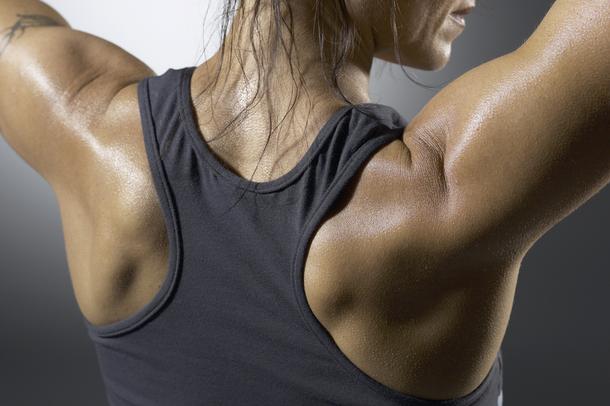Physical Rehabilitation & Prevention in Sports Injuries
 Sport Injuries, including knee injuries, shoulder injuries and even ankle injuries tend to occur in sporting activities. Professional athletes in particular, are prone to injuries due to the excessive wear and tear associated with the demands of competitive sports. The right exercise program to maintain strength, flexibility and stability can help athletes recover quickly after an injury, empowering them to resume athletic activities.
Sport Injuries, including knee injuries, shoulder injuries and even ankle injuries tend to occur in sporting activities. Professional athletes in particular, are prone to injuries due to the excessive wear and tear associated with the demands of competitive sports. The right exercise program to maintain strength, flexibility and stability can help athletes recover quickly after an injury, empowering them to resume athletic activities.
Sports injuries, by definition, include injuries involving the musculo-skeletal system. The musculo-skeletal system includes the bones, tissues, muscles, and cartilage. Every injury is different and every person heals differently. The purpose of rehabilitation is to help the injured tissues recover in a controlled and supervised manner. It takes time for an injury to heal, and it’s best to seek the guidance of an experienced Core Physical Medicine Rehabilitation Specialist during this time.
Our Core Rehab Specialists can design a safe and effective recovery program specifically geared towards your individual injury, abilities and goals. Our specialists can identify the cause of the injury, create a treatment plan and also teach preventative measures of further injury in the future.
Some of the most common sports injuries include sprains, strains, shin splints and knee injuries. If you or someone you know is injured, schedule an evaluation with a rehab specialist as quickly as possible.
 Core Physical Medicine Rehabilitation – The Right Choice
Core Physical Medicine Rehabilitation – The Right Choice
Our Core Physical Medicine Rehabilitation Specialists are healthcare professionals with extensive training in the musculo-skeletal system. Our specialists can work closely with you to assess muscle imbalance, range of motion and functional requirements of that particular sport.
For example, a baseball pitcher may need a shoulder stabilization program; while a basketball player may need a speed and plyometric (explosive strength) training program. Our Rehab Specialists can evaluate, identify, and plan a sport-specific injury prevention and (once the injury is treated) an athletic performance program that can help the athlete regain full potential.
As part of the exercise therapy program, your rehab specialist can teach stretches and exercises; often using special equipment to reach specific goals. Rehab focuses on reducing pain and improving function as quickly as possible. Rest is an important part of the recovery process. Rest, combined with physical rehabilitation, is the best recipe for recovery after being injured.
Don’t Wait For an Injury…
An injury is the last thing an you want. Without properly rehabilitation, the damage can get worse. Physical rehab will help you heal and return to normal. In many cases, rehab can also help to strengthen a particular areas to avoid future injuries.
Taking the time to go through a safe, effective and comprehensive rehab program requires time and patience, but it’s the best way for you to resume and continue your sport or activity. It’s a great way to come back to the sport you love and enjoy it, while minimizing the likelihood of re-injury.
If you or someone you know is an athlete, or just needs to get back on the “playing field”, consider working one of our other Rehab Specialists at Core Physical Medicine. In fact, you don’t have to wait till you are injured, because a Rehabilitation Specialist can help you improve performance and minimize injury.
A preventive, proactive approach is likely to help you even more. Don’t wait till you get injured. There is a lot that a our Core Rehab Specialists can do. We can design the right program and get you great results, whether its athletic enhancement or recovery from an injury.
Our Core Rehab Specialists assess and develop safe and effective physical rehabilitation exercises and conditioning programs for clients with cardiovascular, musculo-skeletal, neurological and metabolic disorders. Contact us today for more information.


![[Correct Standing Image]](https://web.archive.org/web/20140129182122im_/http://www.nismat.org/ptcor/back/stand1.jpg)
![[Correct Sitting Image]](https://web.archive.org/web/20140129182122im_/http://www.nismat.org/ptcor/back/sit1.jpg)
![[Incorrect Sitting Image]](https://web.archive.org/web/20140129182122im_/http://www.nismat.org/ptcor/back/sit2.jpg)
 Although toned abdominal muscles may look attractive, they actually serve a very important role in helping to stabilize the back. When abdominal muscles are strong they can help stabilize the pelvis and lumbar spine when the hips flex by preventing an increase in lumbar lordosis.
Although toned abdominal muscles may look attractive, they actually serve a very important role in helping to stabilize the back. When abdominal muscles are strong they can help stabilize the pelvis and lumbar spine when the hips flex by preventing an increase in lumbar lordosis.